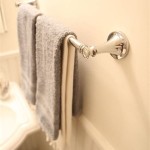Tips on How to Plan a Bathroom Renovation
A bathroom renovation can be a significant investment, but it can also dramatically improve your home's functionality and aesthetic appeal. A well-planned bathroom renovation can transform a cramped and outdated space into a luxurious oasis. However, navigating the complexities of a bathroom renovation can be overwhelming. This article provides essential tips to help you plan your bathroom renovation effectively.
Define Your Goals and Budget
Before diving in, it's crucial to clearly define your goals and budget. Consider what you want to achieve with the renovation. Are you aiming for a complete overhaul, or do you simply need to update a few features? Determine the key elements you wish to improve, such as the layout, fixtures, flooring, or lighting.
Once you have a clear vision, create a realistic budget. Research costs for materials, labor, and permits. Consider consulting with contractors for estimates. Remember to factor in potential unexpected expenses that can arise during the renovation process.
Design and Planning
Designing your bathroom renovation is an exciting process. It allows you to personalize the space and create a sanctuary that meets your needs. Start by gathering inspiration from magazines, websites, and home improvement shows. Consider your personal style, preferences, and the existing layout of your bathroom.
You can create a mood board or digital design to visualize your ideas and ensure consistency. Consult with a professional designer if desired. Consider the functionality and accessibility of the space. For example, choose fixtures and configurations that cater to your needs and mobility.
Choosing Materials and Fixtures
Choosing the right materials and fixtures is essential to the overall aesthetic and functionality of your bathroom. Consider durability, moisture resistance, and style.
For flooring, you have a variety of options, including tile, stone, vinyl, or laminate. Tile offers durability and versatility, while stone can add a luxurious feel. Vinyl and laminate are cost-effective alternatives.
When selecting countertops, consider materials like granite, quartz, or engineered stone. These materials are durable and resist stains and scratches.
For fixtures, explore various options for tubs, showers, sinks, and faucets. Consider your personal preferences, style, and budget.
Working with Contractors
Finding a reputable contractor is crucial to ensure the quality and success of your bathroom renovation.
Research and interview potential contractors. Check their credentials, licenses, insurance, and reviews.
Get multiple bids from contractors to compare pricing and services. Carefully review the contracts before signing. Clarify the scope of work, timeline, payment terms, and any warranties.
Communicate your expectations and concerns clearly throughout the renovation process.
Permits and Inspections
Before starting any major renovation work, it's important to understand the necessary permits and inspections required in your area.
Check with your local building department to determine the requirements for your bathroom renovation.
Obtaining the necessary permits can help avoid potential legal issues and ensure compliance with building codes.
Schedule inspections at the appropriate stages of the renovation process to ensure that the work meets safety standards and regulations.

Contractor Connection Tips For Planning Your Bathroom Renovation Project

How To Plan For A Bathroom Remodel

6 Ideas To Remodel Your Bathroom On A Budget Dumpsters Com

Bathroom Remodeling A Step By Guide Budget Dumpster

Renovating The Bathroom Where To Start Rona

How To Plan A Bathroom Remodel Dfw Improved

Bathroom Remodel Checklist Tips Mr Handyman

Bathroom Layout 101 A Guide To Planning Your Dream

Bathroom Workbook How To Remodel Your

Bathroom Remodeling A Step By Guide Budget Dumpster
Related Posts






